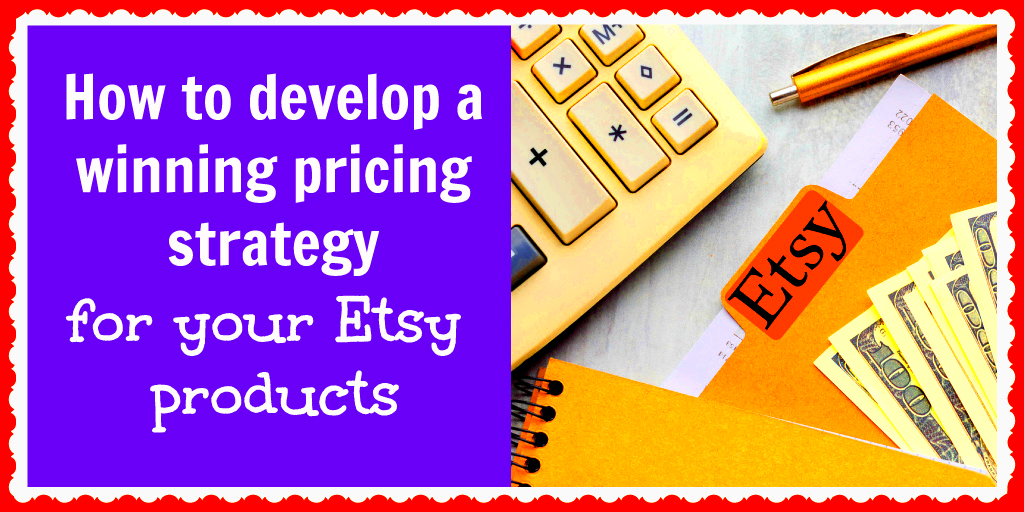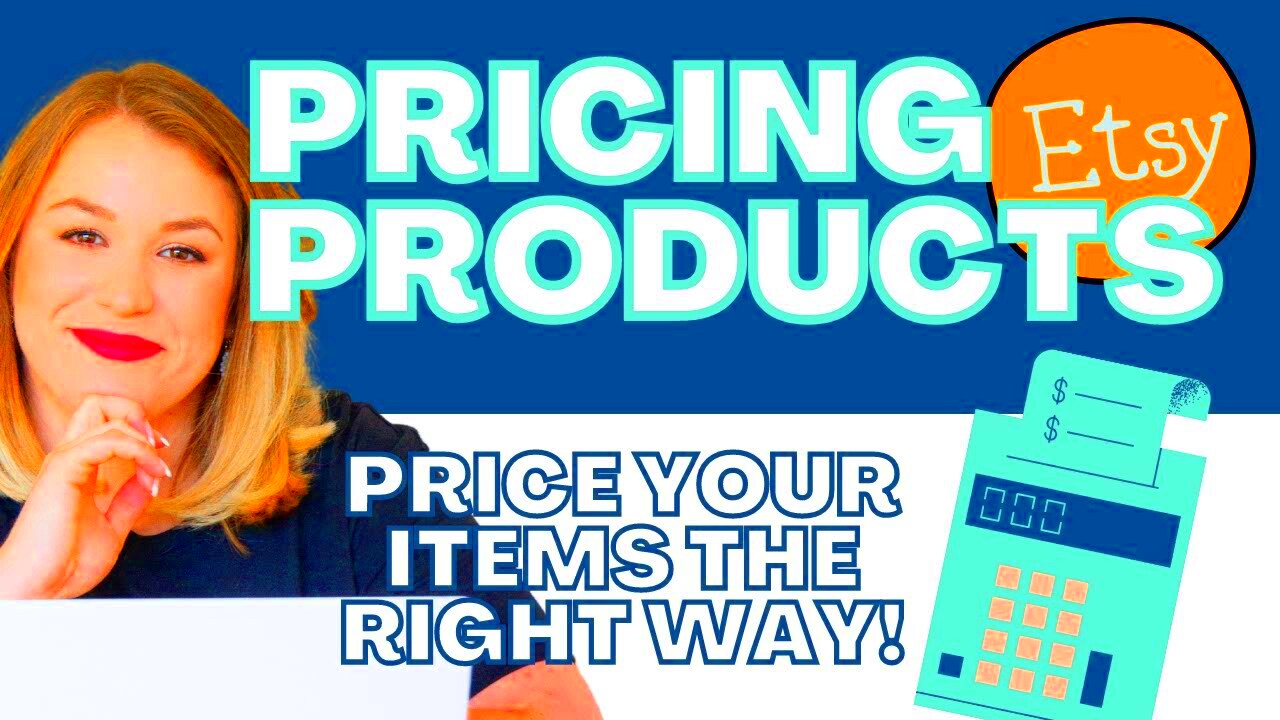Setting the prices for your creations on Etsy isn't as straightforward as just putting a figure on something and crossing your fingers for good luck. When I embarked on my journey I discovered that pricing is akin to a balancing act where you juggle between turning a profit and ensuring customer satisfaction. You see when I launched my store I was quite lost when it came to determining prices. However with time I realized that having a range of price options can truly have an impact.
Some customers seek out top notch quality and are ready to spend for it while others are just hunting for a good deal. Recognizing this I started offering a range of prices, depending on materials, time and customer preferences. Lets explore together how diverse pricing approaches can bring about amazing results for your store as well.
How to Set Base Prices for Your Etsy Products

Determining the initial price for your offerings can be quite challenging. I recall facing difficulties during my early days. The thrill of making a sale often clouded my judgment when it came to receiving a compensation. However believe me, once you grasp the process it becomes smoother. Lets begin by approaching this matter, with a mindset.
- Cost of Materials: Write down every little thing you use. You’ll be surprised at how many small costs add up.
- Your Time: Never underestimate the time you spend making the product. This is your sweat and effort. Price it accordingly!
- Overhead Costs: Factor in electricity, packaging, shipping materials – all the background stuff that we often forget about.
If you make and sell jewellery for instance calculate the expenses for beads, strings, clasps and your time. Lets say the total adds up to ₹500. In that case you should set the price of your product to be at least double that amount or around ₹1000. This not only covers your costs but also provides a healthy profit margin. By determining your starting price you ensure that you dont end up losing money. Its not solely about closing a deal; its about ensuring that the deal is rewarding, for you.
Also Read This: How Do You Mirror an Image on iPhone for Creative Edits
Offering Discounts and Promotions Effectively

Who doesn't enjoy getting a deal? I still vividly recall the moment I introduced a sale at my store. The enthusiasm from my customers was tangible yet it also taught me a valuable lesson – discounts can have their drawbacks. The key is to ensure that you're not selling yourself short along the way. Here's what I've discovered about running promotions without facing regrets down the road:
- Time-Limited Offers: The urgency of a limited-time discount is real. People are more likely to buy when they think they might miss out.
- Percentage vs Flat Discounts: Sometimes offering a 10% off looks much more appealing than cutting a fixed ₹50, even if the difference isn’t much. Play around with this to see what works for your products.
- Bundle Offers: I found success in bundling products together at a slightly discounted rate. Customers felt like they were getting a deal, and I was selling more items at once.
Just keep in mind not to go overboard with discounts. If you keep cutting prices customers might begin to perceive that your products are only valuable at a reduced price. Save promotions for occasions or to clear out inventory. Finding the balance is crucial. You want your store to convey a sense of worth rather than a sense of urgency. When done discounts can attract a wave of customers without eating into your profits.
Also Read This: Viewing a LinkedIn Profile Anonymously and Privacy Tips
How to Price Custom and Personalized Orders
Handling orders is a whole different story. Initially when I began providing products I assumed it would involve simply adding a name or making some design adjustments. However I soon discovered how much more time and energy these customizations actually require! The tricky part is finding a balance between delighting your customer and ensuring that you don't undervalue, for the additional effort involved.
Here’s what I learned over time:
- Start with your Base Price: Always have a base price for the non-customized version of your product. This gives you a starting point.
- Factor in the Time and Effort: Every little detail matters. Custom orders often mean extra design work, communication with the buyer, and even revisions. Make sure you account for that.
- Material Costs: Sometimes, customers request special materials. For instance, if someone asks for a gold-plated charm instead of silver, the cost difference needs to reflect in your pricing.
There was a time when a client requested a design and I ended up dedicating hours to fine tuning it. I added an fee of ₹500 for the customization but quickly realized it didn’t compensate for the effort I put in. Lesson learned! From that point on I started setting prices according to the intricacy of the request. Customized work is a service and it’s perfectly reasonable to charge for the extra value you provide.
Also Read This: Mastering Curling Iron Techniques for Stunning Curls
Managing Shipping Costs in Your Pricing Strategy
Shipping costs often go unnoticed but they can have a big impact on a deal. I used to be unsure about whether to factor shipping into my prices or bill it separately. In USA where shipping fees differ significantly based on the area this can be quite tricky.
What I found most effective was:
- Offering Free Shipping: People love free shipping, even if the cost is already built into the product price. For example, if my item costs ₹500 and shipping is ₹50, I’ll price the item at ₹550 and market it as free shipping.
- Flat-Rate Shipping: This approach works when shipping costs are fairly predictable. I charge a flat ₹60 across the board for smaller items. It simplifies things for me and the customer.
- Location-Based Pricing: For larger or heavier items, I offer calculated shipping based on the customer’s location. This way, I'm not losing money when someone orders from a far-off place.
To prevent any unexpected costs it's important to be upfront regarding your shipping fees. I had an instance where a customer canceled a significant order because she was unaware of the high shipping charge to her location. That experience taught me the importance of being transparent! Nowadays I make an effort to find a middle ground where shipping costs don't deter potential customers while also ensuring that I don't incur losses.
Also Read This: Twitch or YouTube – Which Is the Superior Streaming Platform
Setting Competitive Prices Without Undermining Your Profits
In the days when I launched my store I often found myself looking at how others priced their offerings. I believed that if I set my prices lower it would lead to increased sales. However I soon realized that this approach wasn’t always effective. Striking a balance, between staying competitive and not underestimating the value of your craft is crucial. Interestingly setting prices too low can sometimes raise doubts, among customers about the quality of what you’re selling.
Here’s what helped me:
- Research Your Market: Check out what similar sellers are charging, but don’t blindly follow their pricing. Your work and efforts are unique.
- Know Your Value: There’s a certain pride in handmade items. People come to Etsy because they want something special, not mass-produced. Don’t be afraid to charge for that uniqueness.
- Offer Tiered Pricing: This is a trick I learned recently. Offer basic versions of your product at a lower price, and premium versions with added features at a higher price. This way, you cater to different budgets without compromising on quality or profits.
There was a time when I considered lowering my prices in a month but I resisted the urge. Instead I concentrated on highlighting the skill that goes into my creations. I didn't merely offer a product; I shared a narrative. And you know what? People were willing to pay the price I set because they recognized the worth behind it. So keep in mind that pricing competitively isn't about being the lowest; it's about being fair, to both your clients and yourself.
Also Read This: Transferring an Image Onto Paper
Handling Price Adjustments and Customer Expectations
Changing prices on Etsy can be a balancing act right? I still vividly recall the moment I decided to increase the prices in my store. My heart raced with anxiety, fearing that all my devoted customers would disappear. However the reality is that price adjustments are sometimes essential, particularly when the expenses for materials or shipping rise. The important thing is to approach it with care and keep your customers informed about the changes.
Here’s how I navigated price fluctuations while keeping my audience engaged:
- Announce the Change: Don’t just raise prices overnight. I once posted on social media and my Etsy shop, letting customers know that due to rising costs, prices would be adjusted in two weeks. This way, people had time to make purchases at the old prices.
- Be Honest and Transparent: Explaining why you’re raising prices makes all the difference. When I shared that material costs had increased, my customers were surprisingly understanding. They respected the honesty.
- Reward Loyal Customers: Before the price adjustment, I offered a small discount to my returning customers. It was a gesture of goodwill, and it helped maintain relationships.
I’ve come to realize that when customers truly appreciate what you offer they’ll stick around even if there’s a slight price increase. It all boils down to trust. Being transparent and above all having faith in the worth of your product or service is key.
Also Read This: Planner Plan Purge: Deleting a Microsoft Planner Plan
Frequently Asked Questions
Throughout the years, I’ve been asked about pricing quite a bit. I figured it would be helpful to address the most frequently asked questions here, in case you share any of those concerns.
1. How do I know if I’m overcharging for my products?
I also found this question challenging. To determine the answer I recommend looking into what your competitors are doing. However instead of solely concentrating on their prices take into consideration the quality of their work too. If you provide handcrafted products dont hesitate to set a price that reflects their value. Keep in mind that you're not selling a product; you're offering your expertise and effort as well.
2. Should I offer free shipping?
The success of this approach hinges on how you set your prices. From what I've observed, customers are quite fond of the concept of shipping, even if it means the cost is factored into the product price. I've had positive results by increasing my product price a bit to account for shipping expenses and promoting it as "free shipping." Just be cautious not to set your prices too high for the market.
3. What do I do if a customer complains about a price increase?
To begin with keep your composure. Kindly clarify the cause of the price hike whether it’s attributed to rising material expenses, an extended production timeline or another factor. Many customers tend to value transparency. While I’ve encountered some customers who were initially let down once I elaborated on the matter they were receptive to the explanation.
Conclusion: Mastering Pricing Strategies for Etsy Success
Finding the right price can sometimes feel like a juggling act. When I launched my Etsy store I often found myself doubting my choices. Was I asking for too much? Or too little? However with time I came to understand that pricing goes beyond mere figures; it involves acknowledging the worth of your craftsmanship and treating both yourself and your customers fairly.
As we talked about figuring out a starting price tweaking it for projects and handling shipping expenses is all part of the larger strategy. It’s not about lowering prices to compete or engaging in a price war. It’s about providing value establishing trust and nurturing a connection with your customers. Don’t hesitate to modify prices when necessary and always be open with your clients.
Ultimately your store showcases your love and commitment. Pricing is only one part of the equation and when handled it can pave the way for lasting success without compromising your efforts. Continue trying new things, believe in yourself and never forget – your offerings have value.

 admin
admin








